
We break down the myths and dive into research to ask the question, is dog sledding cruel?
Is dog sledding inhumane? This is something we have always wondered, and the main reason that up until recently, we had never tried the activity.
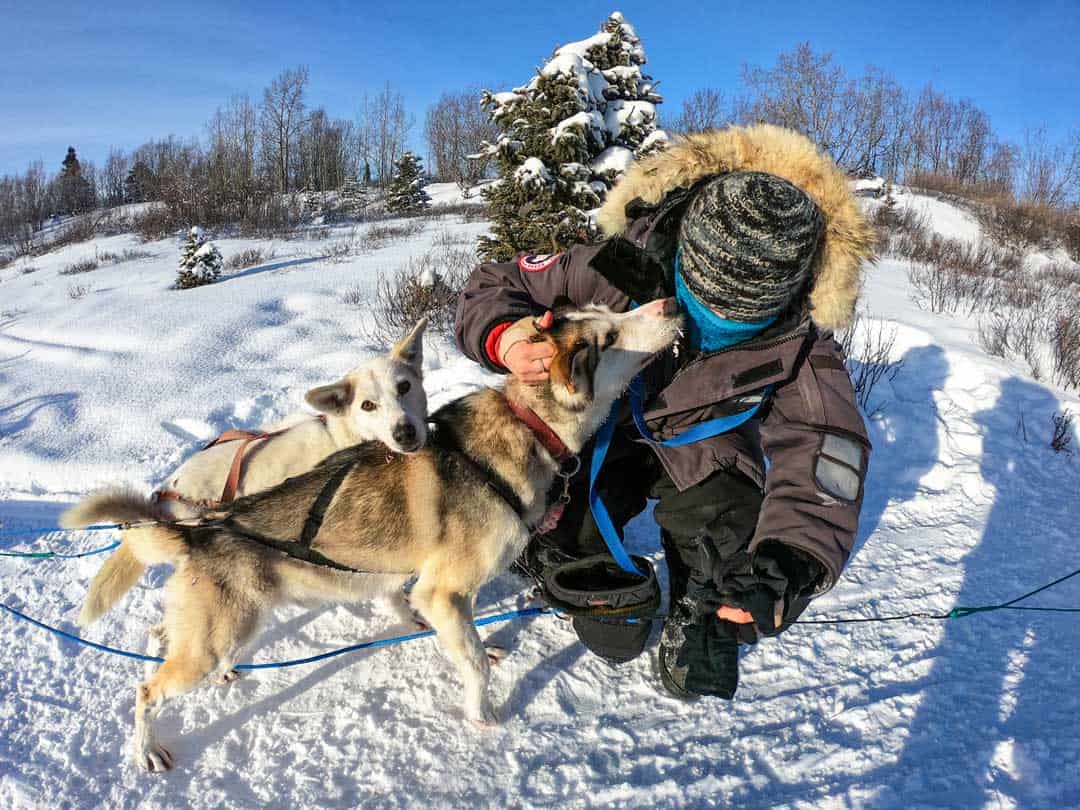
Over the years we’ve heard horror stories about dog mushing, of dogs being overworked, or worse, and when we had the opportunity to try it for ourselves in Canada we were unsure of what to do.
We have always been big advocates for responsible tourism, especially when it comes to wildlife encounters and the fair treatment of animals.
We’re heavily opposed to activities such as elephant riding, close-up experiences with large cats and other similar tourist wildlife attractions, and the idea of using dogs to pull us across the snow just didn’t sit right with us.
It’s against our nature to jump to conclusions without doing proper research though, and so we began looking into as many stories as possible.
Our first round of research came up with some sad results. The Iditarod race in Alaska, perhaps the most famous dog sledding race in the world, had a tragic history of dog deaths, with 107 gorgeous pups perishing in the 1997 event alone.
Then there was the horrific story of the dog sledding outfitter in Whistler, who were caught putting down 56 of their dogs after the Winter Olympics, as bookings had fallen and they could no longer afford to feed them all.
Instantly the activity of dog sledding seemed like something we couldn’t partake in. But then again, these were the two most famous negative cases which we had already heard about. What if those two events didn’t truly represent the entire industry?
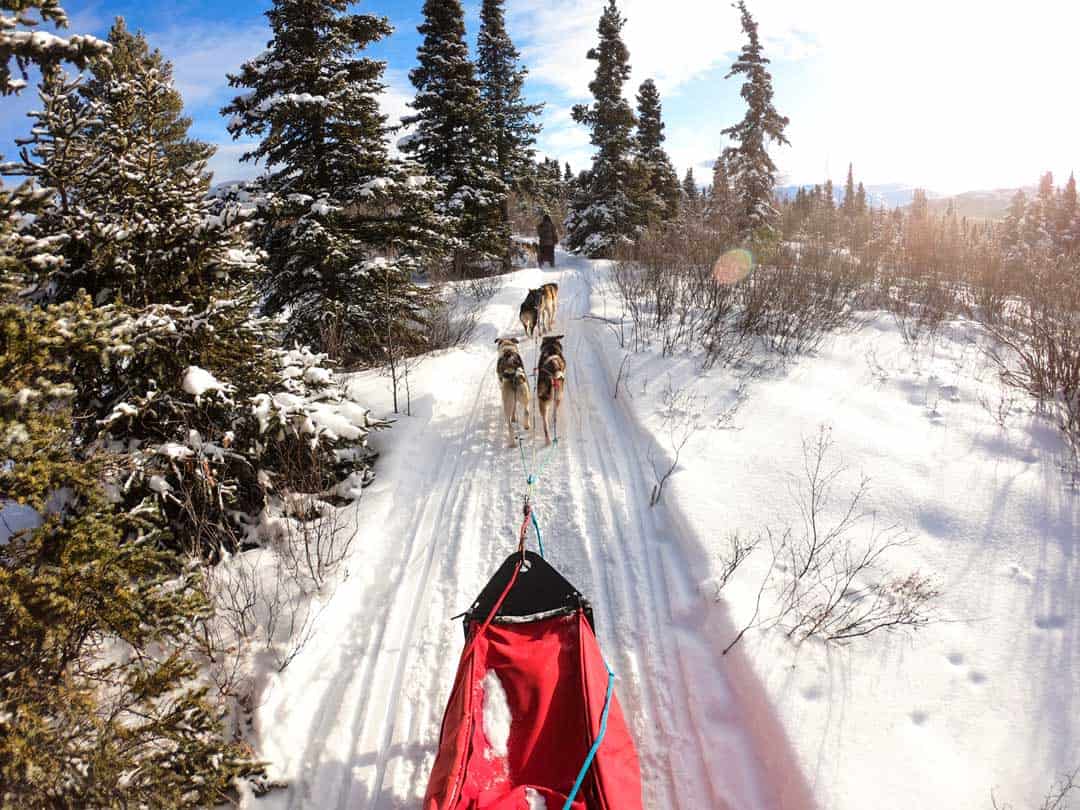
Luckily we continued reading, and what we found was much more uplifting. Countless vets and dog sledding companies swore that the huskies actually love mushing, and that each pup was treated extremely well with regular veterinary check-ups, lots of rest breaks and healthy food provided.
We also chatted to a few friends with similar morals and ethics who had been dog sledding abroad, and they all felt fine with their choice to go ahead with the activity.
The fact of the matter was the more we dived into whether or not dog sledding is cruel, the most information we got saying that it was nothing of the sort.
After all, if riding a horse was considered totally fine, why would dog sledding be any different if the dogs were capable and properly looked after?
Torn with what to do, we decided to go ahead with it and make up our own decision. What we found was simply amazing.
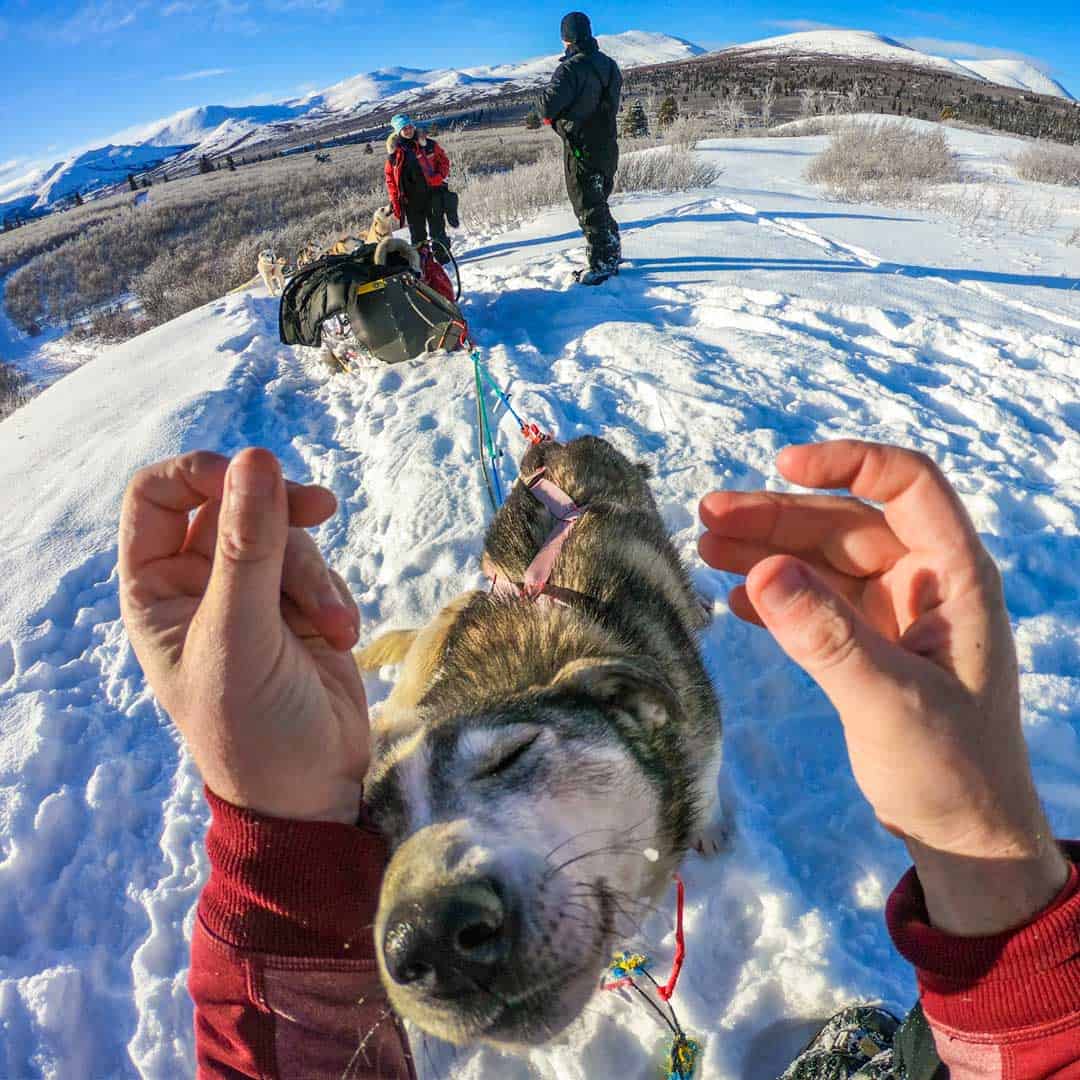
Is Dog Sledding Cruel? Our Personal Experience
We travelled to the Yukon in Canada’s far north and signed up for a 4-day dog sledding tour with Sky High Wilderness Ranch. These guys were known for being of the best dog mushing operators in the country, and we couldn’t wait to check it out.
Our timing to Canada couldn’t have been any better for this research, as we actually landed in Whitehorse the night before the Yukon Quest started.
This is one of the most challenging dog sledding races in the world, but unlike it’s infamous counterpart the Iditarod in Alaska, the Yukon Quest isn’t plagued with horror stories.
In the morning we wandered down to the Yukon Quest starting line to check out what the atmosphere was like, and most importantly to see how the dogs were doing.
In the yards were dozens of trucks and sleds, and there were countless gorgeous dogs getting prepared for the race ahead.
We chatted with quite a lot with vets and racers at the Yukon Quest when we were walking around at the start of the event, and they all assured us that the dogs genuinely loved racing, and were never pushed beyond their capabilities.
Watching the lead mushers play with their dogs also seemed to us as though they sincerely loved their pets, and weren’t treating them purely as tools for their trade.
We watched one man spend nearly 5 minutes with each of his dogs, lovingly patting and massaging them, and the smiles on the dogs were undeniably real.
Our feelings about dog sledding were improving, and it only got better once we headed off for our own adventure.
From the moment we arrived at Sky High Wilderness Ranch it was apparent that the owners and workers loved the dogs like family members.
Everywhere we looked were people playing with the dogs, giving them snacks, hugging them and showing affection. It wasn’t an act for the tourists, here the dogs came first.
When we headed down to the yard to meet the sled dogs we were at first confronted to see they were all chained up to their pens (a timber box with hay for insulation).
As we got to know more about the sled dogs though we learnt that it was necessary. Dogs are pack animals after all, and in such a high energy place if huskies were allowed to walk around on their own they would inevitably end up challenging each other, leading to fights and injuries.
Their pens were basic, but provided plenty of warmth and protection from the elements in case of real bad weather.
One of our first concerns was that the dogs were left outside when the mercury plummets to -40. However huskies are blessed with an extremely thick coat of fur, and even when it was that cold we never saw them seek shelter or shiver. Rather they could be found rolling around in the snow and ice, loving every moment of it.
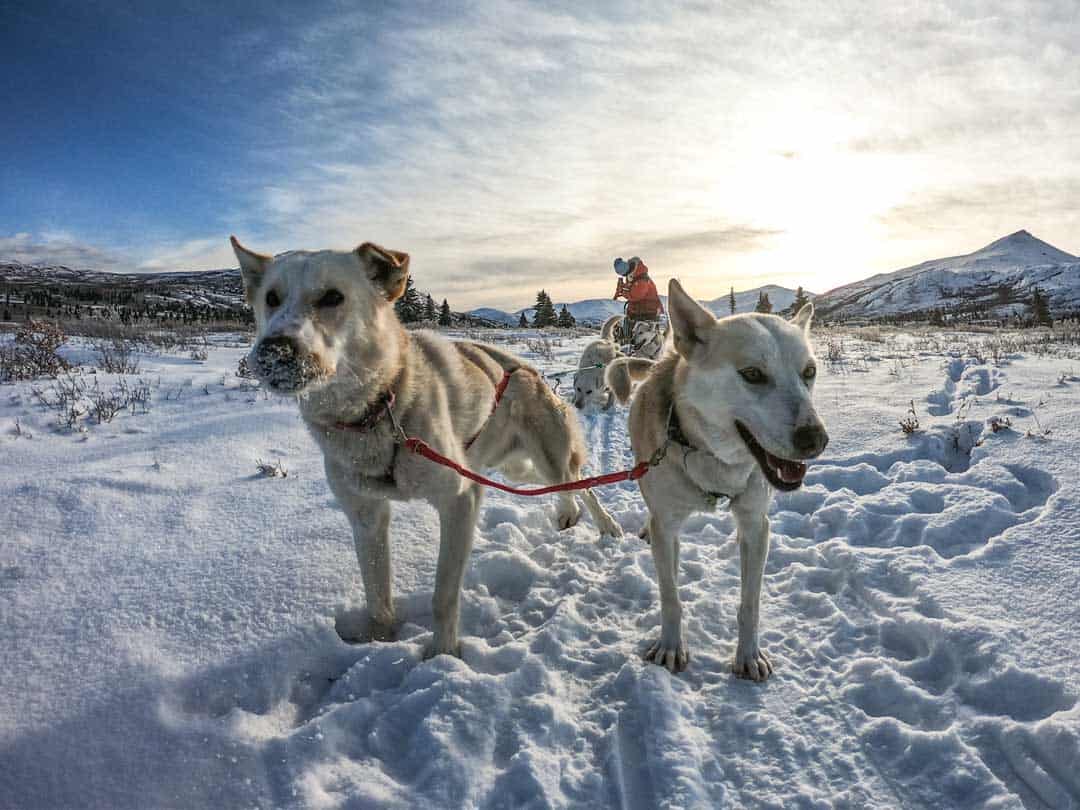
The older sled dogs that were retired roamed around freely, living out their golden years in peace with the freedom to go where they want, whenever they want.
We asked if the dogs at Sky High Wilderness Ranch were ever given up for adoption, but were told that it wasn’t possible as they had grown up on the property and only knew a life of mushing.
They were far too high-energy for somebody from the city to take into ownership as standard pets. That’s why they lived out their days in the world they had always known.
When it came to the actual mushing, this is where we really saw how much the dogs loved the activity.
As soon as we would walk up towards their pens with a lead in hand, the dogs would excitedly jump up and down, pulling on their chain towards us as we got closer. The happiness in their faces was irrefutable.
Once we collected them and took off the chain to their pen they basically dragged us towards the sled-loading area. They knew what they were doing, and wanted to do it.
It was the same once we started getting them prepped for the day. They would immediately calm down as we put on their harnesses, allowing us to lift their legs through the loops (or even lifting them already to help us).
At the final stage, getting ready to go, we would tie them to the sled. At this point the dogs turned into mushing machines, jumping in the air and trying the hardest to drag the sled forward. We had to have the anchor firmly in place, or else they would be gone before we had a chance to load ourselves on.
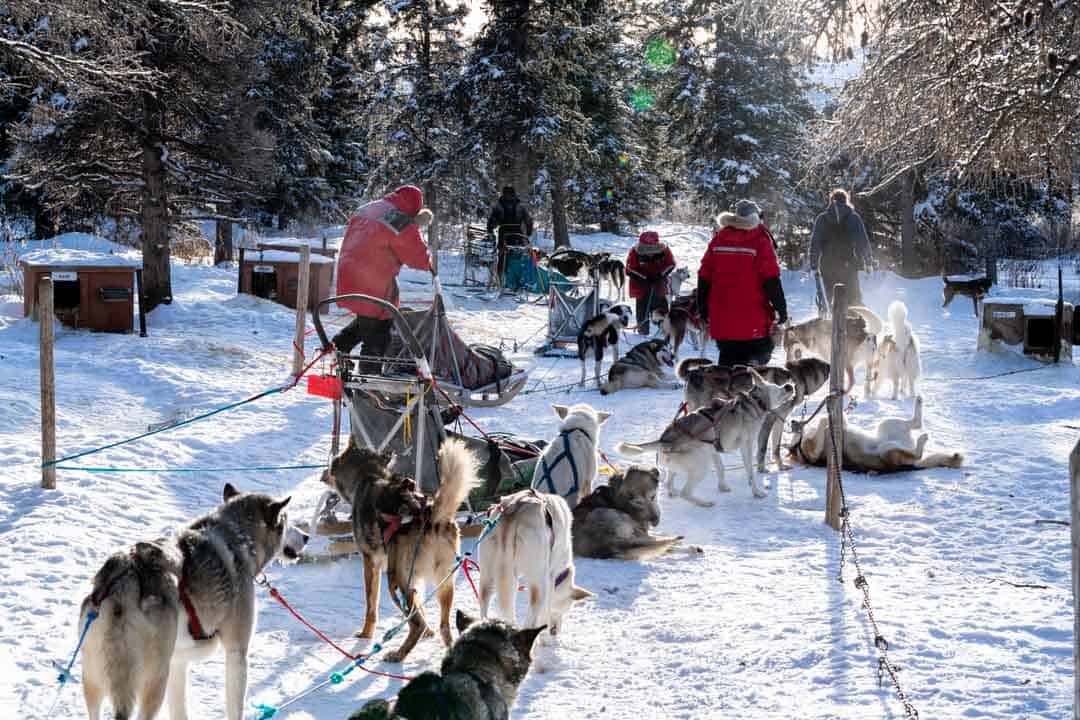
Once we were out on the trails the dogs kept a steady pace, constantly moving forward and looking back to see if we were ok.
Our guides were very strict on us that if we ever came to an uphill section, we were to get off the sleds and push them to assist with the dogs.
Likewise if we were going downhill we must constantly be leaning on the brakes so we didn’t get out of control and accidentally run into the backs of the dogs.
We were under instruction to always be watching the sled dogs, making sure the ropes didn’t get tangled up, and to immediately let the guides know if we noticed one dog leaping or slowing down.
Dog sledding was a fun activity, for sure, but it was not to come at the expense of the dogs’ health.
When the days were over we’d take the dogs back to the yard, feed them, give them massages and make sure they were safely back in their pens.
We spoke at length with the guides and the owner of Sky High Wilderness Ranch, Jocelyn LeBlanc, about the perception that dog sledding was cruel.
They all agreed that there has been some tragic examples in the past, but that these were actually quite unusual. The dogs were their livelihood, and without their wellbeing they couldn’t run a business either.
Customers weren’t foolish either. They could tell if something didn’t feel right the minute they stepped onto the property or took one look at the dogs.
It was also obviously clear that these people genuinely loved their dogs. They knew them all by name, they were always playing with them, and were constantly showing affection.
Our personal experience at Sky High Wilderness Ranch was nothing but positive, and it completely convinced us that this was a perfectly responsible activity.
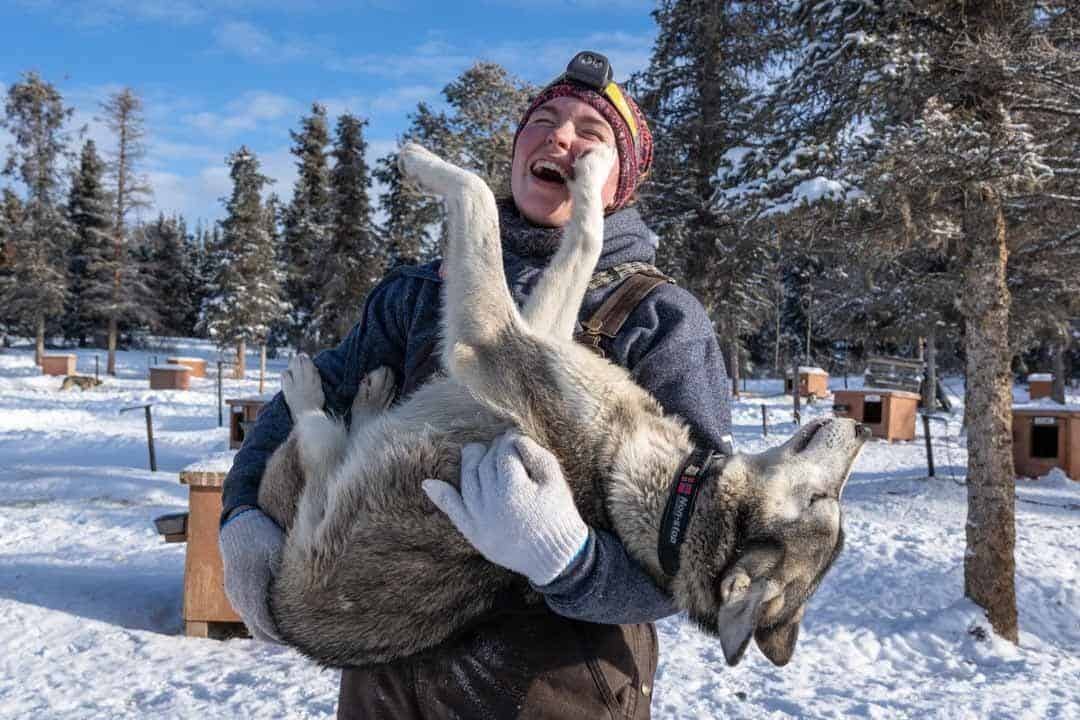
What About Other Places?
During our next couple of weeks around Canada, we travelled to Quebec and Banff, two places that were also famous for dog sledding tours.
While we didn’t join any new tours on this trip, we did visit dog sledding company in Quebec and spent some time chatting to the staff and owner.
It was the exact same experience as when we were Yukon. These people put their dogs on a pedestal. The owner even adopted dogs that the RSPCA were going to put down, even though they couldn’t be put to work, purely so she could give them a wonderful life at her property.
The reason we didn’t go sledding there was because it had snowed so much the night before. “It’s too much work for the dogs to pull through this much snow, better to give them a rest day and give the customers their money back,” she proudly said.
While we were exploring the best things to do in Banff, we joined a company for a day of ice climbing and asked the guide if had any experience dog sledding.
“I’ve never done it myself,” he shared, “but I have a few friends that work at dog sledding companies and the dogs absolutely love it. They’re born for it, and they have a really good life!”
During our questioning we never came across another story of sled dog animal cruelty outside of the two examples we had seen before. In the end we made up our mind. Is dog sledding cruel? Not in the slightest.
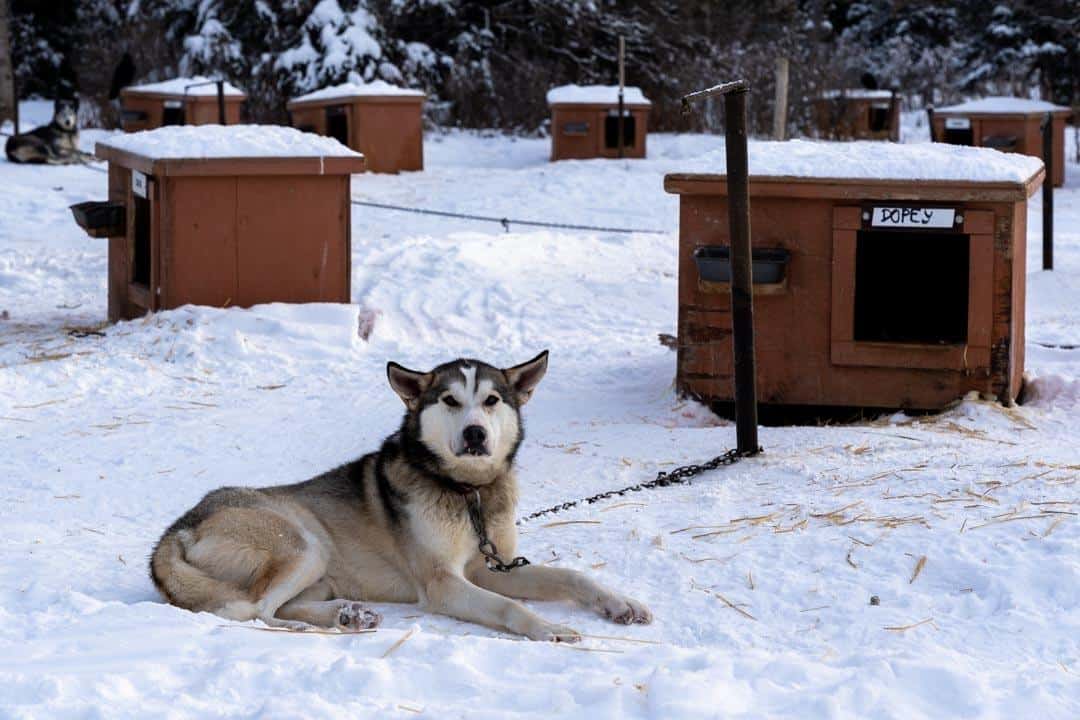
Can the Dogs Handle Pulling Sleds?
This is often the question people ask when considering whether or not dog sledding is inhumane. Here’s what we found out.
The dogs that are used for sledding are mostly huskies, or very similar breeds to huskies, and these dogs are well and truly born to mush. It’s in their blood.
They are strong work animals, and given the opportunity they will run for days without stop. They have so much energy to burn that the crave exercise.
As for the added weight of the sleds, this is why dogs are always put in teams of 4, 5, 6 or even more, depending on how many people will be riding in the sled.
Once the sled starts moving as well, it’s all about momentum. It’s easier to keep something on the go once it’s already moving rather than pulling a stationary object.
For this reason whenever the sled takes off with the dogs, the person in control jumps off and pushes as well to assist the dogs. The same is done with uphill sections – the human pushes so the whole job isn’t left to the dogs.
What About the Cold?
These sled dogs have very thick fur that is meant for living in sub-zero temperatures. While we might need plenty of layers at -20, these dogs barely feel the cold at that temperature.
When it gets really cold though (-40 for example), the guides will often put little jumpers on them, and sometimes booties to protect their feet. These aren’t necessary, but they do provide a little bit of extra comfort for the dogs.
Would We go Dog Sledding Again?
As we mentioned, we are very much about responsible travel and sustainable tourism. We are vehemently opposed to any kinds of animal mistreatment, and will always use our platforms to bring awareness to these negative activities.
Dog sledding though is anything but. Based on our experiences and research, we would say dog sledding isn’t any worse than riding a horse. In fact, the dogs are probably treated better.
If anybody ever asks us, “is dog sledding cruel”, we can strongly stand by our experience and say that we don’t believe it is in the slightest.
That being said, always do your research on any companies you choose to join for animal activities.
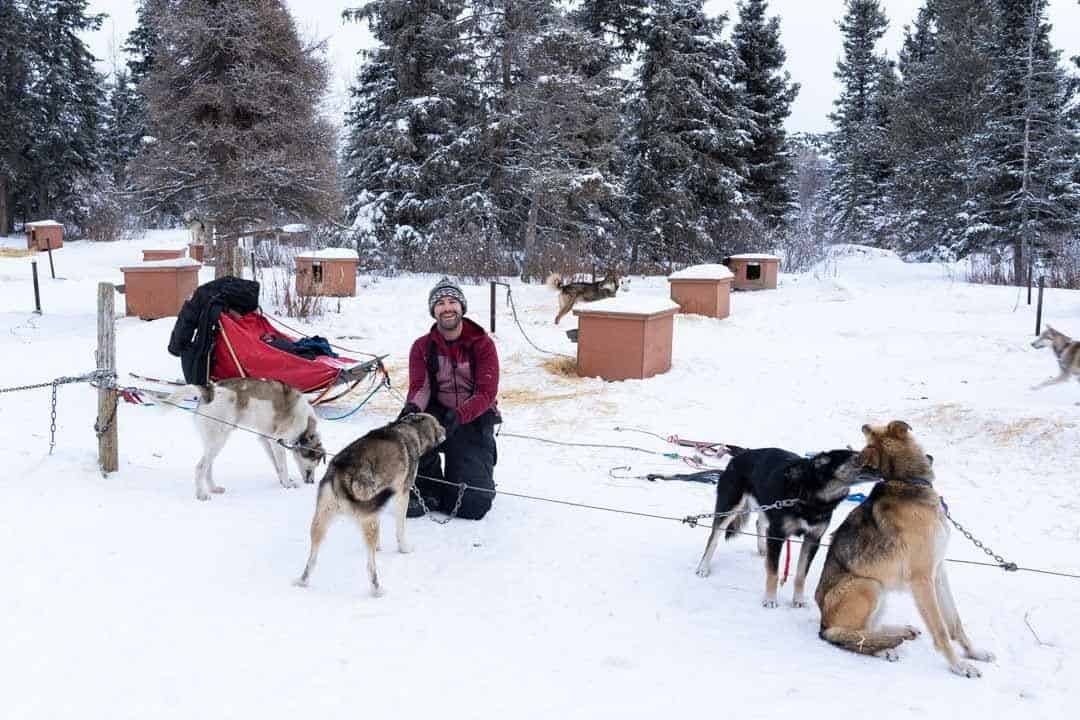
Discover more from reviewer4you.com
Subscribe to get the latest posts to your email.



